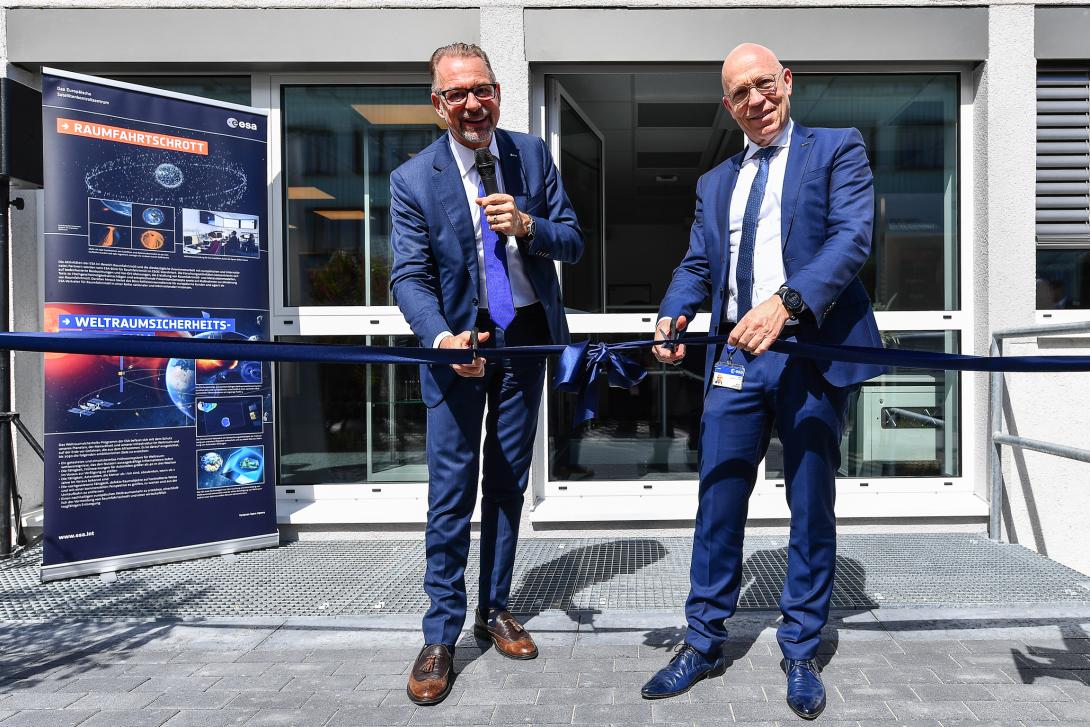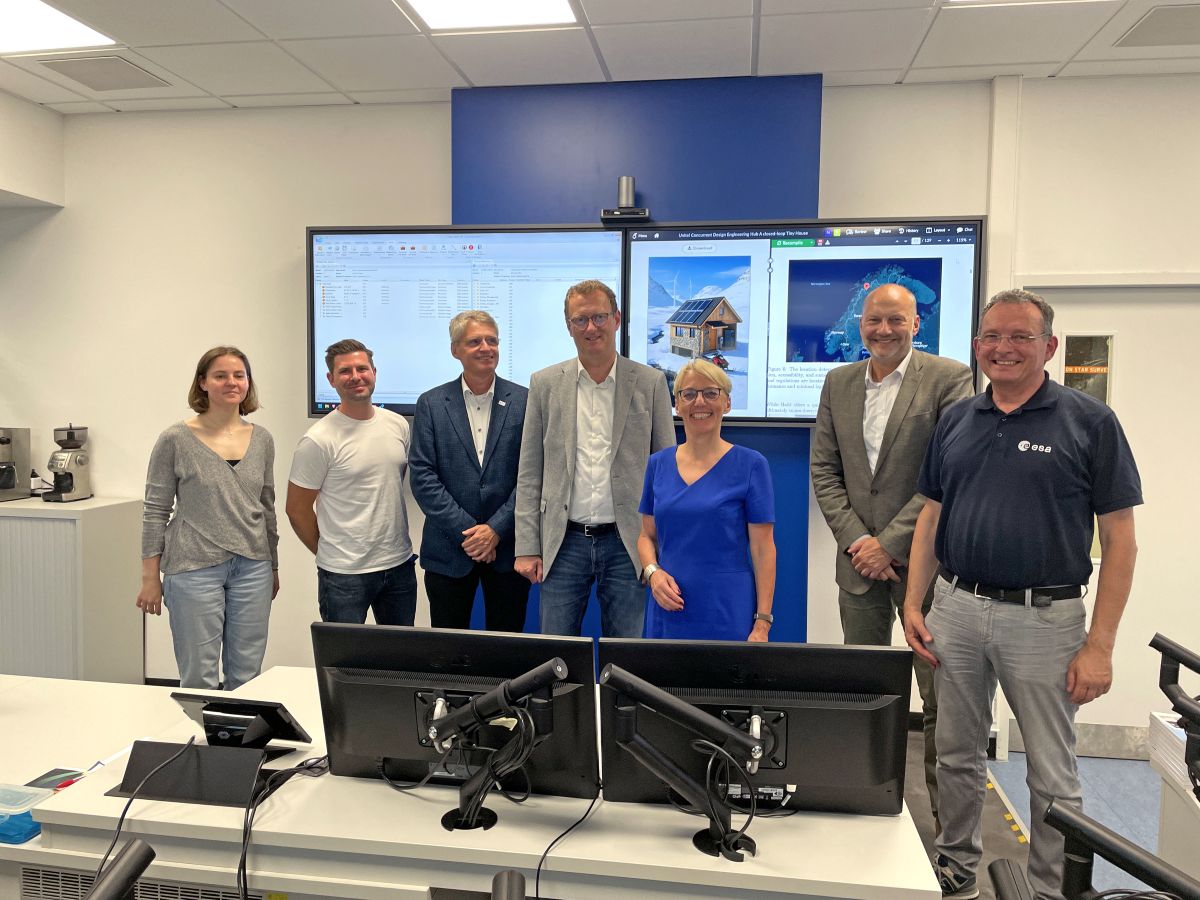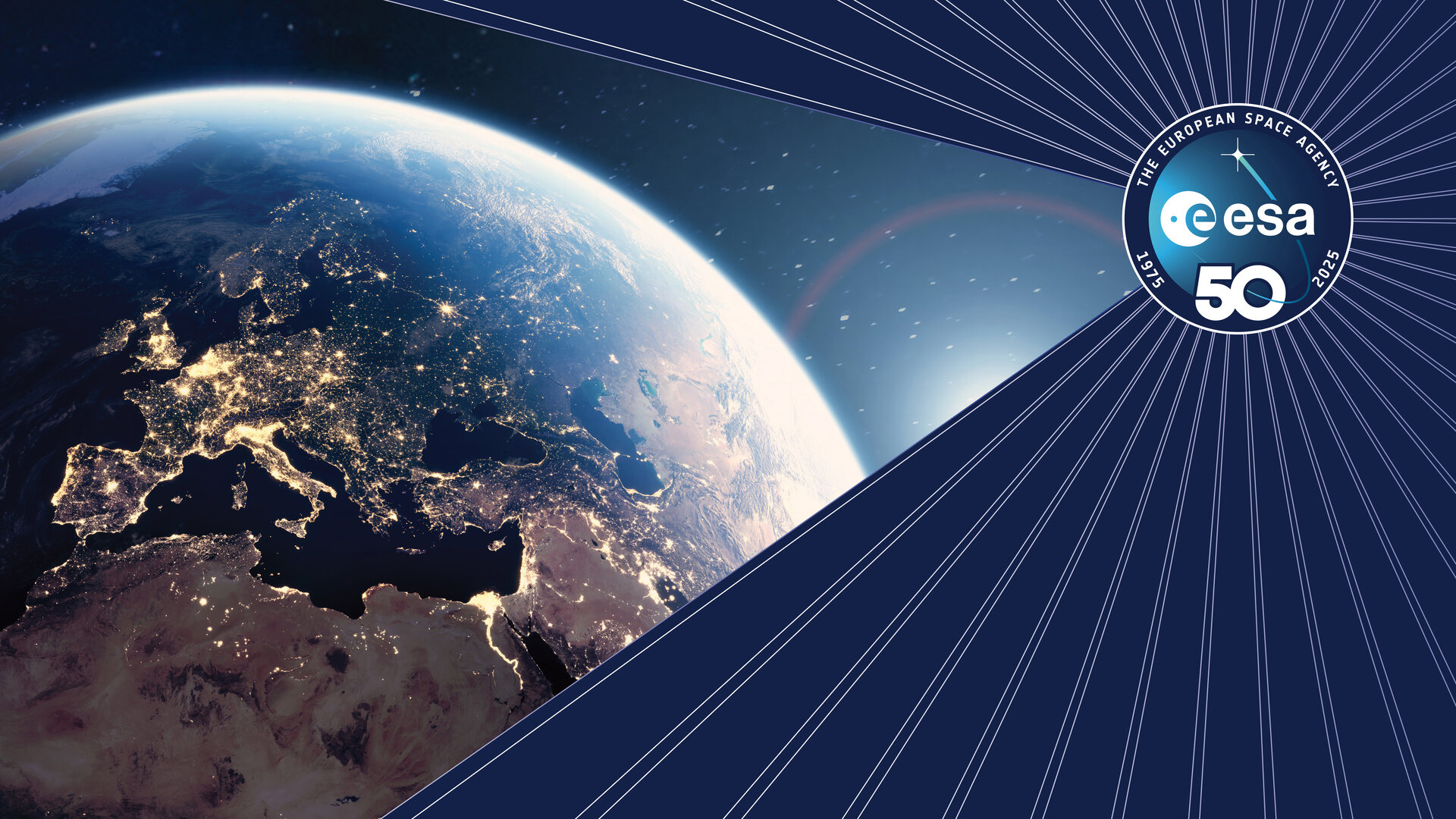ESA Director General opens ESOC’s new Space Safety Centre
ESA Director General Josef Aschbacher opened the new Space Safety Centre at ESOC today as part of a bilateral meeting with Director of Operations Rolf Densing.
ESOC is the primary home of the Agency’s Space Safety programme, which protects our Pale Blue Dot, its inhabitants, and vital infrastructure from solar, asteroid and space debris hazards, and is a key component of ESA’s Agenda 2025 ‘Protect accelerator’.
“This new ESA facility demonstrates the ambition of Europe to have its critical missions in orbit and civil infrastructure on ground well protected against hazards from space,” says Director General Aschbacher.
“In close cooperation with its Member States, ESA is contributing to more autonomous and resilient space programmes, today and in the future.”

Photo: ESA / Juergen Mai
Protection from our active star
The Space Safety Centre provides a dynamic environment where next-generation space weather capabilities, tools and models will be developed, tested and evaluated in close cooperation with European institutes and industry.
The Centre also supports the provision of space weather information and warnings to ESA-operated space missions. It will work in close coordination with the Agency’s Space Weather Services Network, providing timely and reliable space weather information to European spacecraft operators, agencies, institutions, researchers and commercial sectors affected by solar activity including transportation, navigation and power grid operators.
“A major space weather event could cause in excess of €15 billion damage in Europe. We cannot prevent space weather, but costly ground infrastructure and satellites – and the critical services they provide – can be protected through forecasts, timely warnings and real-time information,” says Rolf Densing, ESA’s Director of Operations.
“The stand-up of this Centre at our ESOC mission control centre demonstrates leadership and is a clear step as ESA works to boost European autonomy in space.”
Industrial opportunities in an expanding ESA programme
As the place from which ESA’s missions are flown, ESOC has the experience and expertise to host the Agency’s Space Safety programme and to coordinate the data and information needed to understand and respond to space weather, asteroid and space debris hazards.
While the new Centre will predominantly support our space weather activities, many other areas of the programme are also expanding.
Together with our industrial partners, we are developing new systems to automate the avoidance process that keeps satellites safe from another threat to our satellites – catastrophic collisions with space debris. For this, we are investigating techniques such as artificial intelligence and using timing signals from Galileo navigation satellites.
Another important aspect of this effort is a high-tech network of ground stations that can scan the sky autonomously to track satellites and spot potentially dangerous pieces of space debris. ESA’s new Izaña-1 laser ranging station is a proving ground for the technologies necessary to make this network a reality. It was built in Tenerife by our partner DiGOS and has been operated from ESOC since February.
Meanwhile, in the effort to protect Earth from asteroids, ESA is working with its partners towards a network of ‘Flyeye’ telescopes – based on the eye of an insect – to scan large areas of the sky for hazardous space rocks each night.
In mid-2014, ESA signed a contract worth around €1 million with a consortium led by CGS S.p.A (Italy), comprising Creotech Instruments S.A. (Poland), SC EnviroScopY SRL (Romania) and Pro Optica S.A. (Romania) for the detailed design of the advanced telescope. The first Flyeye telescope will be installed on Mount Mufara in Sicily.
There are also opportunities for industry and academia to participate in leading roles in the programme’s three upcoming flagship missions, Vigil, Hera and Clearspace-1. These opportunities were presented to the European space industry at our recent Space Safety Industry Day.



